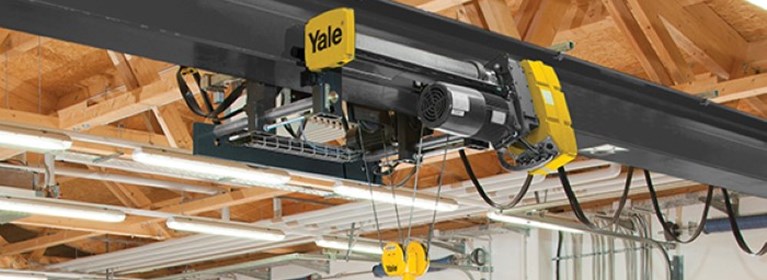
Overhead Crane Classes: What you Need to Know
How To's | Safety and Training | By Dan Beilfuss | Apr 16, 2021
Having a better understanding of overhead crane classes can help ensure you select the right crane for your application and save you from paying for components you don't need. Two cranes could offer the same lifting capacity, but if one has a higher crane rating, the cost of specialized crane components can add up quickly.
How are Cranes classified?
Overhead cranes are classified by a load spectrum consisting of these three main criteria:
- Crane load capacity
- Number of lifts the crane can do per hour
- Environmental conditions and how long components are designed to last
The Crane Manufacturers Association of America (CMAA) defines class of service using a combination of load class (typical load weight relative to rated capacity) and load cycles (times the crane will be used over its lifetime )
Table 2.8-1
CMAA Crane Class Service Definition in Terms of Load Class and Load Cycles
| Cycle | Cargo Load | k = Average Effective Load Factor | |||
|---|---|---|---|---|---|
| N1 | N2 | N3 | N4 | ||
|
L1 |
A B C D |
B C D E |
C D E F |
D E F F |
0.35 - 0.53 0.531 - 0.67 0.671 - 0.85 0.851 - 1.00 |
| Irregular occasional use followed by long idle periods | Regular use in intermittent operation | Regular use in continuous operation | Regular use in severe continuous operation | ||
Aulas de carga :
L1 = Cranes lifting rated load exceptionally and normally very light loads.
L2 = Cranes that rarely hoist the rated load, and normal loads of about 1/3 of the rated load.
L3 = Cranes that lift the rated load quite often and typically load between 1/3 and 2/3 of the rated load.
L4 = Cranes that are regularly loaded close to rated load.
Ciclos de carga:
N1 = 20,000 to 100,000 cycles
N2 = 100,000 to 500,000 cycles
N3 = 500,000 to 2,000,000 cycles
N4 = over 2,000,000 cycles
Table 2.8-1 is from the CMAA Specification 70
The CMAA uses these criteria to specify six different classifications:
Class A - Infrequent Service
Generally used as a backup crane if a main crane fails or when there are long idle periods between elevators. Class A cranes operate at slow speeds and offer precise handling. They are commonly used in power plants, utilities, turbine rooms and engine repair applications.
Class B - Light duty
Speeds are slow and loads range from none to occasional full capacity for Class B cranes. Lifts per hour range from two to five with an average of 10 feet per lift. These cranes are often used in light assembly, repair shops and light storage operations.
Class C - Moderate Service
Often used in machine shops or paper mill machine rooms, Class C cranes handle loads that rotate an average of 50% of rated capacity, with five to 10 elevators per hour averaging 15 feet.
Class D - Heavy Duty
Class D cranes can consistently handle loads close to 50% of rated capacity during the working period. These cranes operate at high speeds with 10 to 20 elevators per hour, averaging 15 feet. It is not advisable to operate more than 65% of elevators at rated capacity. These cranes are often used in heavy machinery shops, steel fabrication, lumber and marine applications.
Class E - Severe Service
These cranes must handle loads close to their rated capacity over their lifetime, with an average of 20 lifts per hour. Class E service cranes are seen in scrap yards, cement plants, lumber and fertilizer plant applications.
Class F - Severe Continuous Service
These cranes must be able to operate consistently while handling loads approaching rated capacity under severe service conditions.
Understanding the correct crane duty classification is the first step in choosing the right overhead crane for your application. Next, you'll want to take a look at the different types of overhead cranes that are available to determine what's best for your application based on space, class requirements, and more. We'll discuss this in an upcoming blog, so be sure to check back soon!
About the Author: Dan Beilfuss
Dan is the Director of Sales in the Americas for Columbus McKinnon's Crane Solutions Group. He was appointed Vice President of CMAA in 2021 and serves alogside the president at membership and committee meetings and will help manage and exercise executive power over buisness affairs of the Association. Dan previously served as Chairman of ECMA (2012-2013), CMAA Engineering Committee Assistant Vice President (2015-2016), and CMAA Engineering Committee Vice President (2017-2018),




 North America - EN
North America - EN


